... or, Liturgical Music: Finding Hymnody to Enlighten the Mind and Lift the Soul
Having been a Seminarian for the Archdiocese of Saint Louis—an Archdiocese with great diversity in liturgical music, priestly ministry, and culture—I have had a great variety of liturgical experiences. Also, being a young adult with twenty-four years of musical listening habits under my belt, I've listened to a wide variety of genres, most especially alternative, classical, and pop music (with a bit of country music thrown in on the side). My most consistent favorite is soundtrack music (which can incorporate many of these styles in a single album).
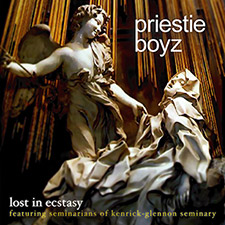
A project on which I am proud to have worked is the recording and mastering of an album (pictured above) for a Seminarian rock band—I helped with everything besides the musical talent. (You can buy the album, Lost in Ecstasy, by the Priestie Boyz, on CDBaby or iTunes). I also had the privilege to work in radio engineering for five radio stations over the course of five years—two pop stations, one soft rock, and two AM/talk radio stations.
These experiences recently came to my mind simultaneously as I attended a youth-oriented Mass, at which many liturgical hymns (published in OCP) were sung with the accompaniment of two guitars, a drum set, and some percussion instruments.
In my analytical mind, I was using my mind's waveform analyzer (didn't know I had one of those until now!) to 'see' the music. What I saw made me think quite a bit about the different genres of music, and different purposes of music—especially liturgical music. In particular, I thought about the efficacy of different styles of music in worship, and how fitting (or unfitting) are different styles, especially for different audiences.
Popular Music: It Keeps Getting Louder
While working on the mastering stage of the Lost in Ecstasy CD, I began reading as many articles (both online and in print) as I could about the art of mastering, and how to make an album (CD, actually) that is fitting for the genre. For rock, pop, hip hop, R&B, and most modern formats, that means compression. Compression basically takes something that's pretty loud, and makes it as loud as is physically possible, using the medium on which it is distributed (be it a CD, tape, Album, radio, etc.).
Over time, even as technologies are created that allow us to have more nuanced and 'rich' music, music has become more and more compressed, and has much less dynamic range (amount of change between quiet and loud parts). There is a great article discussing this phenomenon posted on George Graham's website: A Recording Engineer's Plea for Dynamic Range. From that article:
"With the pop music business having become very competitive, a myth arose among producers and record companies that the way to get one's record to stand out (in the competition for airplay) was to make it as loud as possible."
In the older days of sound recording, albums and analog tape didn't have a lot of dynamic range, because of the physical limitations of the media. Fortunately, this wasn't a huge problem, because recordings were made more for musical enjoyment and relaxation, rather than for multi-platinum album sales and high chart rankings.
As time went on, recording and playback technologies improved, but sound mixing and mastering engineers found that the loudest and most in-your-face sound (even for relatively tame songs) were able to attract the most album sales, especially through radio play. (In my time working with various radio stations, I have found that all the stations applied extra compression to the music before it was broadcast; usually quite a bit!
Therefore, we find the progression of loudness of popular songs from the mid-twentieth century to today. In the waveforms below, I show, visually, the loudness and sustained volume of different songs, in a progression over time:
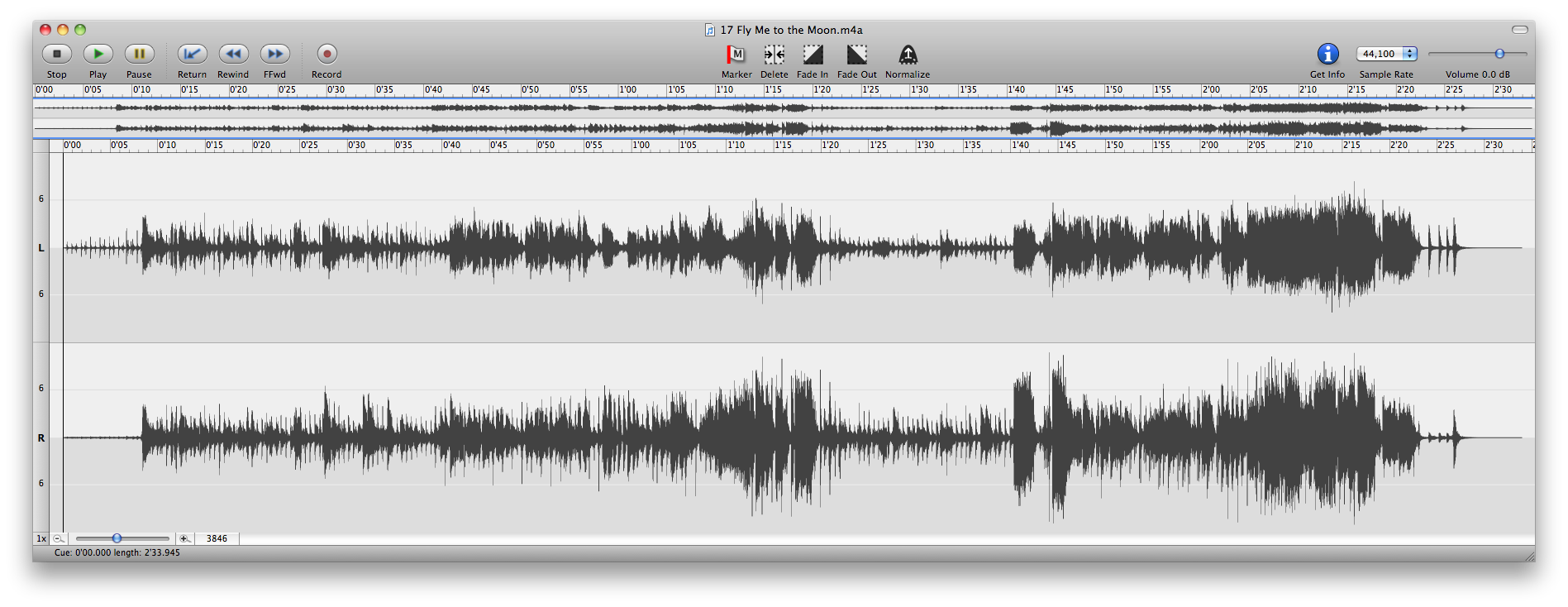
Fly Me to the Moon (Frank Sinatra - 1964)
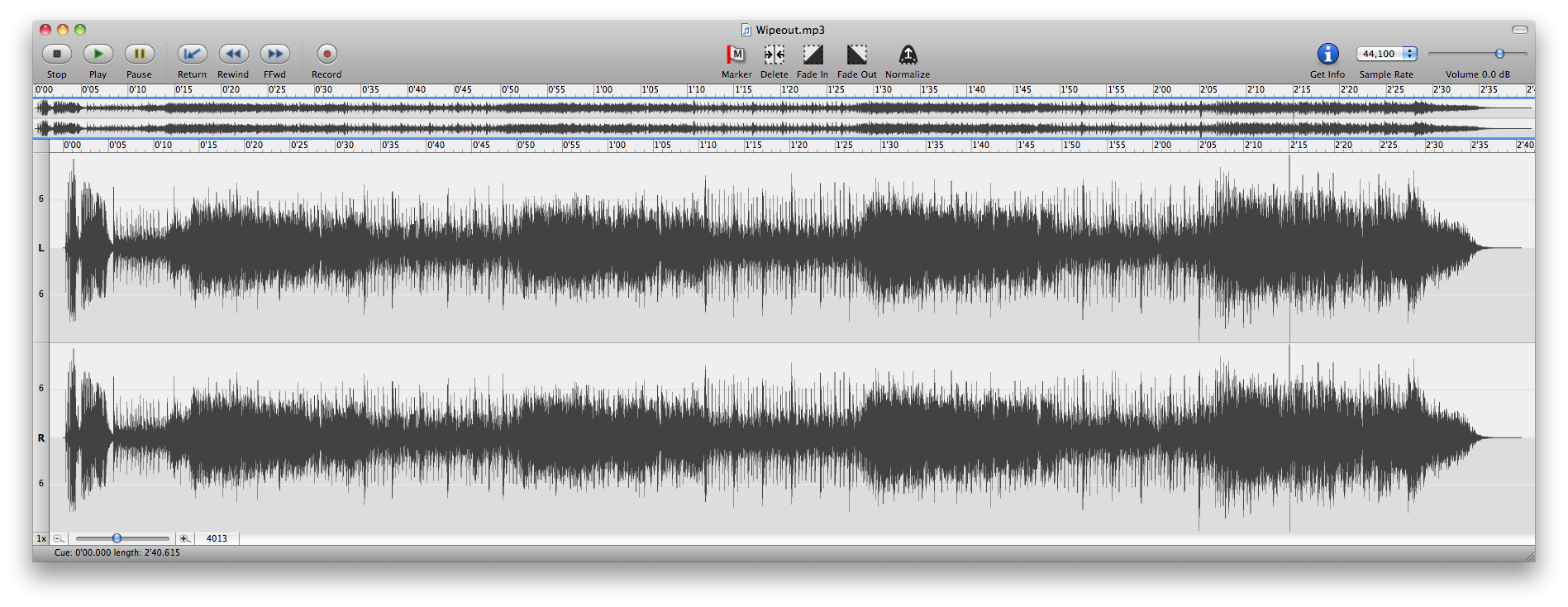
Wipeout (The Beach Boys - 1962) - A relatively loud song for its day
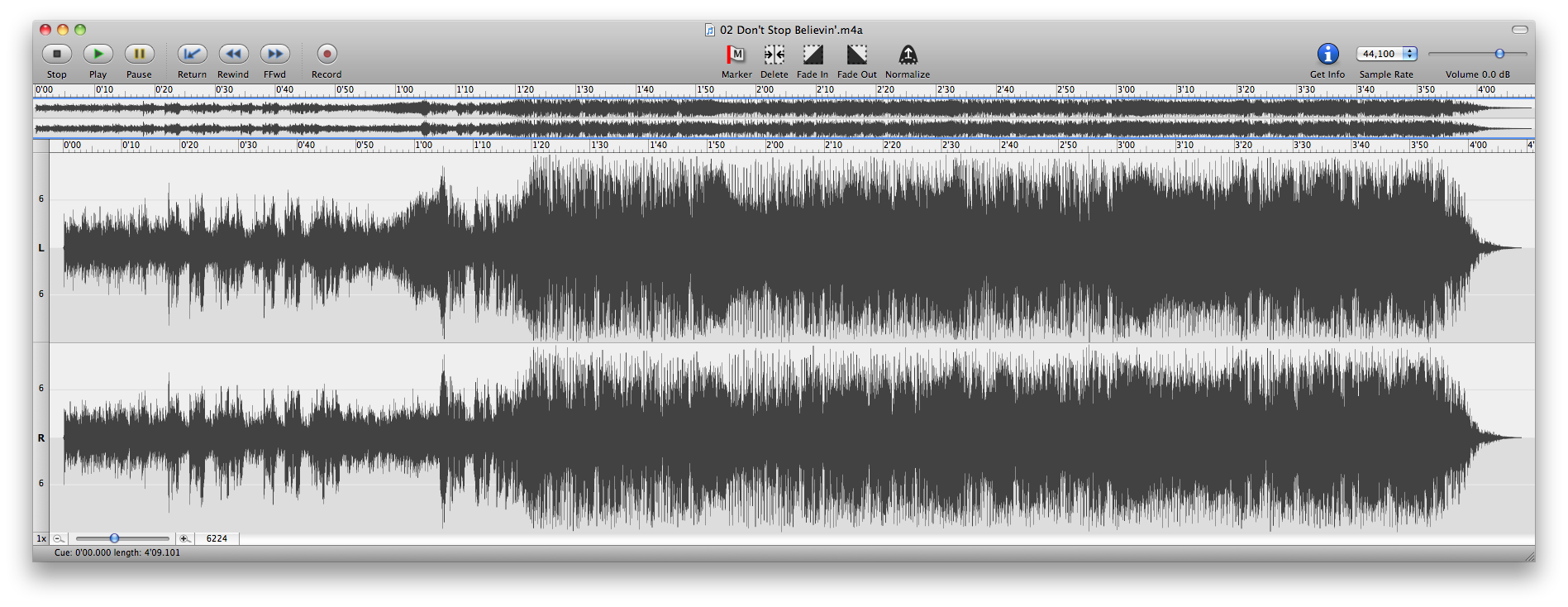
Don't Stop Believin' (Journey - 1981) - The rock n' roll era is in full swing
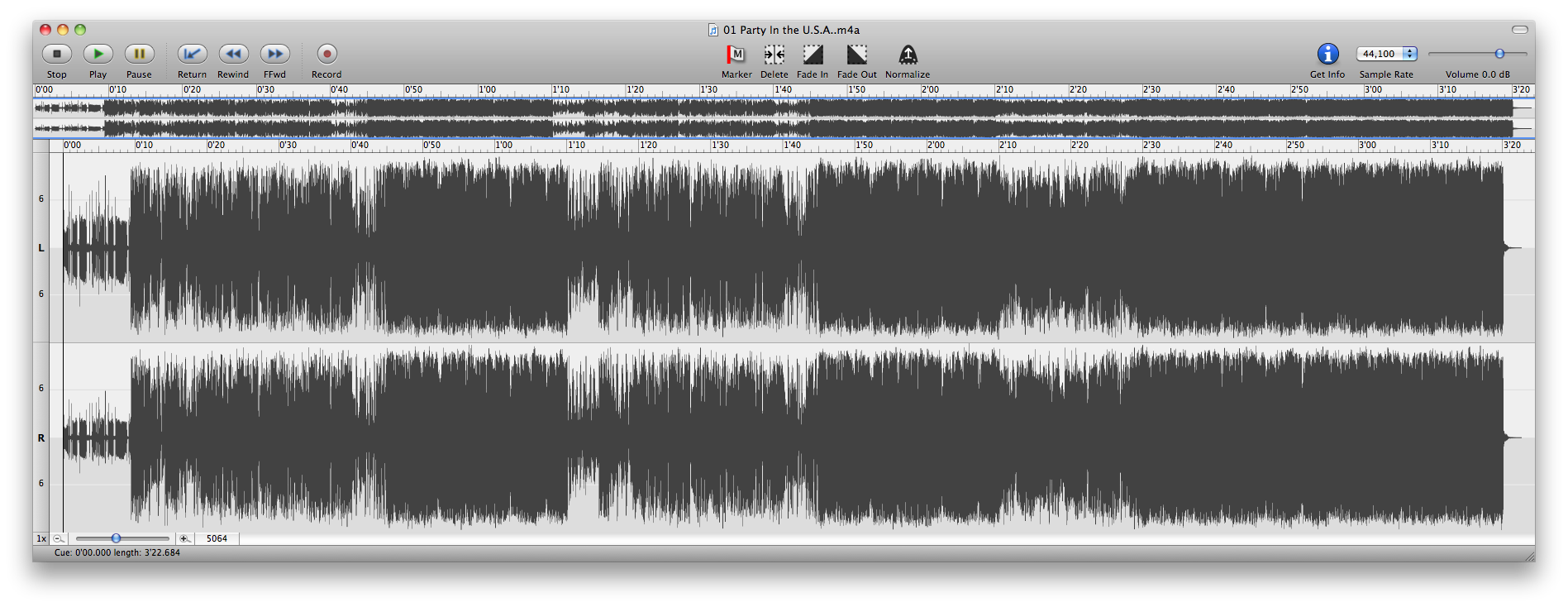
Party in the U.S.A. (Miley Cyrus - 2009) - Is there any dynamic range left? Maybe a little.
It is rather obvious (I've viewed many different songs by waveform—not just these three) that the twentieth century (and now the twenty-first) has seen the loss of musical nuance, and musicians, engineers, and the general public are instead favoring loudness and beat-driven music.
You can see definite separation in the music of the chorus and intro from the body. But that's about it. Verse-refrain-verse-refrain, ad nauseam. There are few pop/rock/modern songs that break this form.
For comparison, here is a view of silence, then one of pure noise:
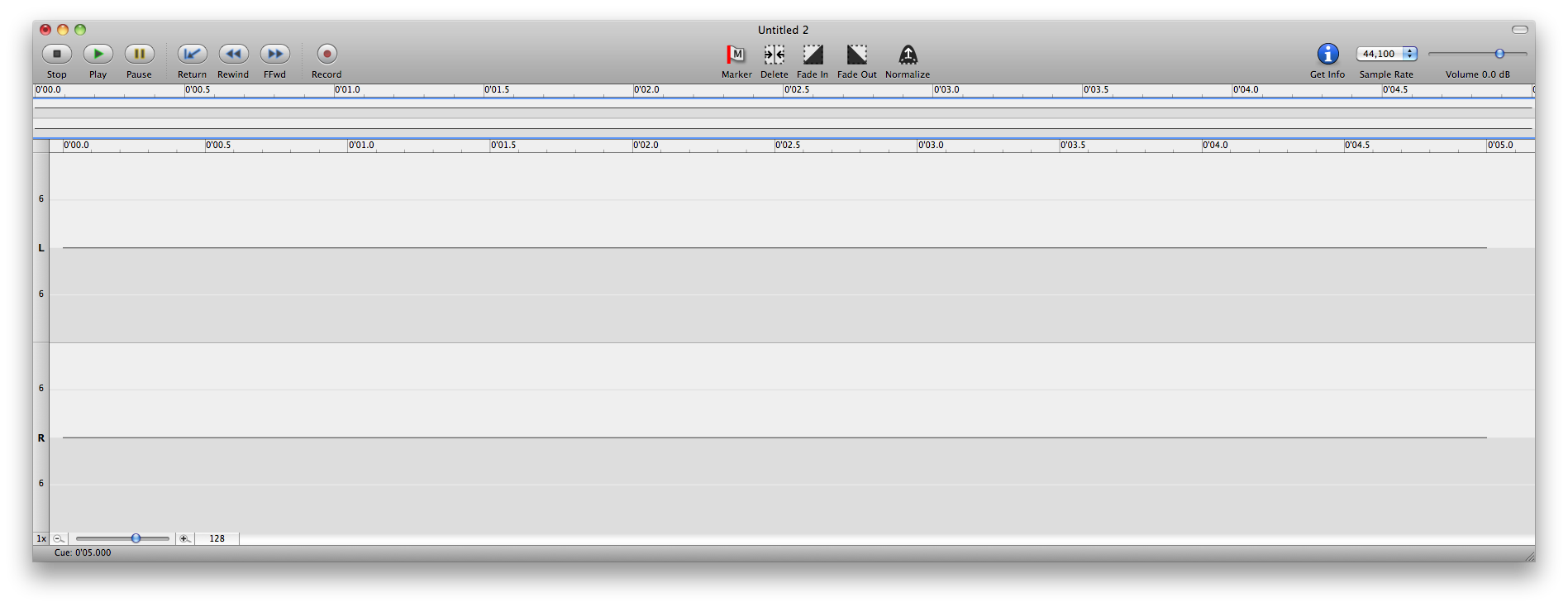

Is This a Bad Thing? No, but It is not the Best Thing
Some would argue that all this compressed and hard-hitting music is evil, bad, horrible, and bad for the public. I disagree; I think it has its merits: it's easy to digest, fun to hear, and good for dancing. Many songs have horrible lyrics, but the style and loudness is not inherently evil.
I would argue, though, that there is plenty of room for other/better musical selections and genres, most especially classical and jazz. I view it like this: In one's musical journey, it is easy to begin with songs that have a sustained rhythm and one level of loudness. That is pop, hip hop, rock, alternative, etc.
But as one continues on the journey of musical enlightenment, one realizes there's a heck of a lot being missed: there are something like 96-100 decibels of volume unexplored. There are thousands of instruments, hundreds of time signature and rhythm combinations, and literally millions of songs unexplored. There is a whole world of music for the enlightened listener—music that begins to move the soul, and not just the body!
Let's take a peek at a couple of classical pieces worth a listen:

The Messiah (Handel - 1741) - Good separation of movement and quiet; it even looks interesting!
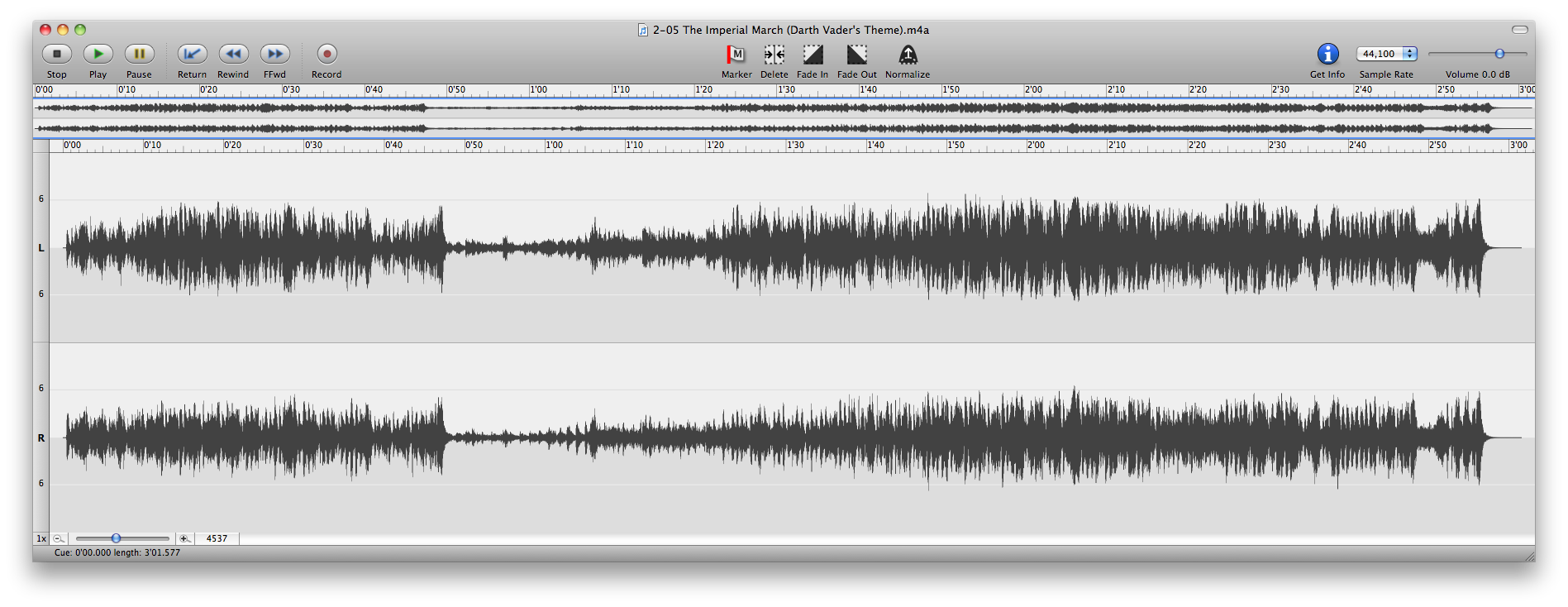
The Imperial March (John Williams - 1980) - Even for a modern soundtrack piece, it has solid diversity, and follows a visible progression from start, to climax, to end.
Music in Liturgy
Those quick to jump to conclusions might surmise that I am about to categorically condemn all modern liturgical music. But no, I am not going to do that.
Rather, I would like to offer a thesis I don't think has been explored much. Basically, it is this: many more modern (1950+) liturgical music, especially CCM (Contemporary Christian Music), follows the direction of popular and crowd-pleasing music of the day (especially in its loudness, compression, beats, and refrains). For example, many of the 1970s hymns followed the rhythm and style of popular 'trippy' bands and the 'kum-ba-ya' spirit of their songs (consider the St. Louis Jesuits, Marty Haugen, and Dan Schutte). And more or less 'traditional' hymns, psalmody and chant follows the setting and style of more 'classical' and 'well-formed' music.
Let's take a glance at a few songs that have been used in different Catholic liturgies I've attended:
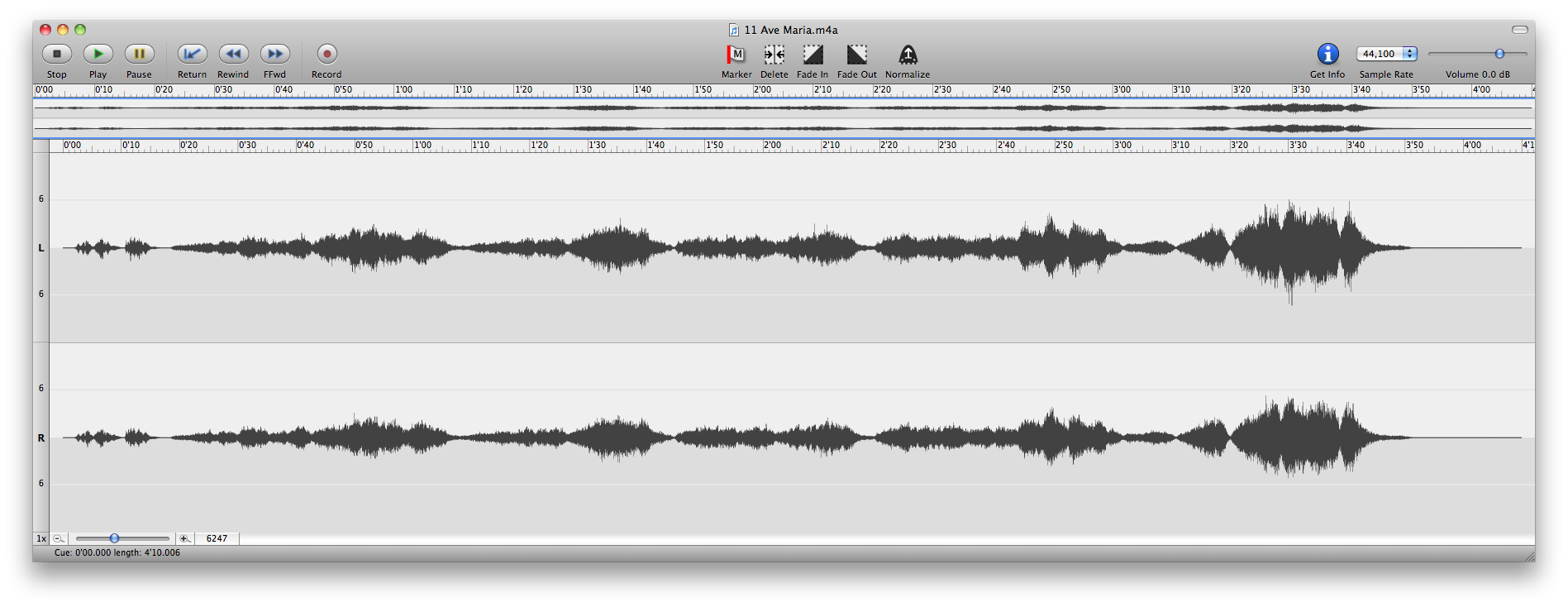
Ave Maria (Biebl - 1964) - an modern rendition of a classic hymn/chant; very moving, with an obvious climax
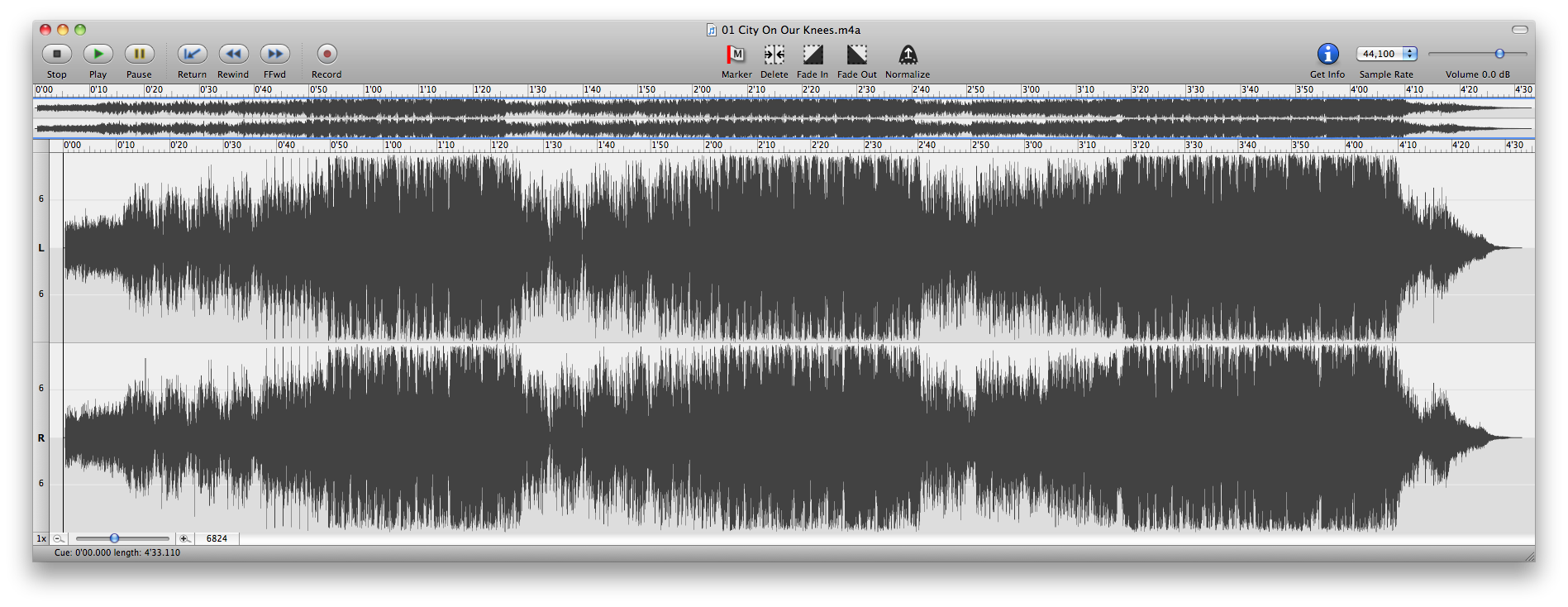
City on Our Knees (tobyMac - 2009) - similar in form and style to most CCM-inspired worship songs
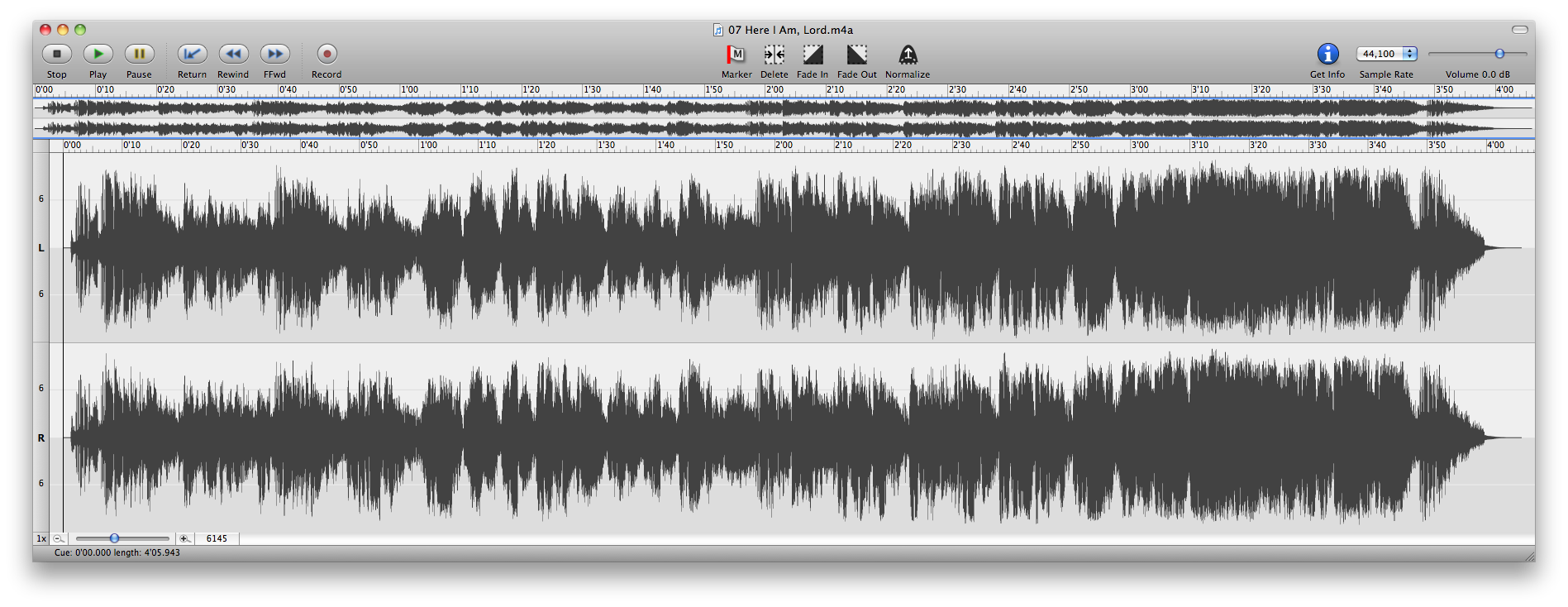
Here I Am, Lord (Dan Schutte - 2001) - a modern liturgical hymn
For those who have a hard time comparing these kinds of hymns and songs audibly, the visual difference is stunning. You can see a marked difference in not only the lack of musical variety, but also the sustained volume (sound pressure hitting your ears). Which one of these musical styles do you think has the greatest potential to help someone to quiet himself, bare his soul to the Lord, and listen for the whisper in which the Lord will speak to him?
"But the Lord is in his holy temple; silence before him, all the earth!" (Habbakuk 2:20)
"The Lord said [to Elijah], 'Go outside and stand on the mountain before the Lord; the Lord will be passing by.' A strong and heavy wind was rending the mountains and crushing rocks before the Lord—but the Lord was not in the wind. After the wind there was an earthquake—but the Lord was not in the earthquake. After the earthquake there was fire—but the Lord was not in the fire. After the fire there was a tiny whispering sound. When he heard this, Elijah hid his face in his cloak and went and stood at the entrance of the cave." (1 Kings 19:11-13)
It is obvious, not only from the above passages, but in every facet of the Bible, and in every saintly writing (see any saint's autobiography), that silence and quietness is the most effective way for one to contemplate and connect with Jesus Christ and with God. In fact, without the inner peace and quiet offered by moments of solitude and a reflective environment, one cannot hope to ever hear Christ's call. By 'moments,' I do not mean two minutes of silence in a liturgy mixed with many minutes of loud music or soft guitar strumming. I mean many minutes, to many hours, of time alone and quiet.
There are many instances where listening to heavily compressed and high-volume music is appropriate... and there are many instances when modern liturgical hymns are appropriate. But as one becomes more and more focused on divine contemplation, these instances become fewer. Therefore, the normative liturgy should aim towards helping Catholics progress on the road to inner peace and unity with Christ.
What Are We to Do?
I don't think that the Church should burn up every copy of an OCP (Oregon Catholic Press) hymnal on hand simply because it contains so many of these high-momentum 'crowd-pleasers,' and so few of the more intellectual and theological pieces. The Church should make sure that all hymns are free of theological heresy, and to the fullest extent possible, free of any questionable doctrine or dogmas. The Church should also actively encourage more widespread use of gregorian chant and more traditional hymnody.
Indeed, Sancrosanctum Concilium, the Vatican II document on the Sacred Liturgy, "acknowledges Gregorian chant as specially suited to the Roman liturgy: therefore, other things being equal, it should be given pride of place in liturgical services." This means that we should hold chant in high esteem, and rather than have one chanted hymn in a year's time, have chant and psalmody as the norm, with other hymnody in a supplemental role.
It is alarming to me how many parishes and Catholic individuals are pushing an agenda of "my way or the highway" when it comes to liturgical music. Obviously, more rhythmic music appeals to a modern audience. But, I ask, is this kind of music the best for an individual's soul in a liturgical setting? Is the music moving the person towards contemplative prayer and unity with Jesus Christ, or is the music putting emphasis on worldly pleasure, bodily delight, and the band itself?
If you're playing music to make people come to Mass (for the music), that's not a good thing.
I propose that individuals who are involved in liturgical music—planning, preparation, and execution—spend time in prayer before every stage of their important task: namely, to lead the People of God closer to eternal unity with Him through music.
Any comments? Please post them below.
Comments
One problem is that isn't very much public popular devotion these days: Church for most people means just a little less than one hour a week on Sundays (or Saturday night).
Certainly we need to bring back the notions of high and low art, with high art being formal and scholarly, and low art coming from the people. High art is appropriate for the liturgy, and low art is appropriate for popular devotion. Popular music would certainly be appropriate for popular devotion.
@Mark - you put it very well! For instance, Taize is a popular private devotional type of prayer, but it really doesn't have a place in Catholic Mass (imo). Similarly, some songs contribute nothing to liturgy, but still have value outside of the Sacred Liturgy.
As a convert from Methodism, the one thing I miss from my past are the 200 year old hymns from the Methodist hymnal. I don't know how many of them are heretical to Catholicism, but the melodies are simple and beautiful and the words are meaningful.
For example, Come Thou Fount of Every Blessing:
Prone to wander, Lord, I feel it /
Prone to leave the God I love /
Here’s my heart, O take and seal it /
Seal it for Thy courts above.
... still gives me goosebumps when I hear it, because it hits me in the heart. I occasionally hear one of those old time Methodist hymns at Mass (i.e. How Great Thou Art), and I'm always glad when I do. I'd much rather hear that than "Eagle's Wings" or similar ilk that doesn't seem to mean anything at all.
Good article on a semi-related note, about how easy it is to pick out Christian music from secular music based on emotion. Of course, in this article, I'm not speaking too much about the idea of Chrisitan vs. secular, but more of liturgical hymnody gone awry. But an interesting article regardless.